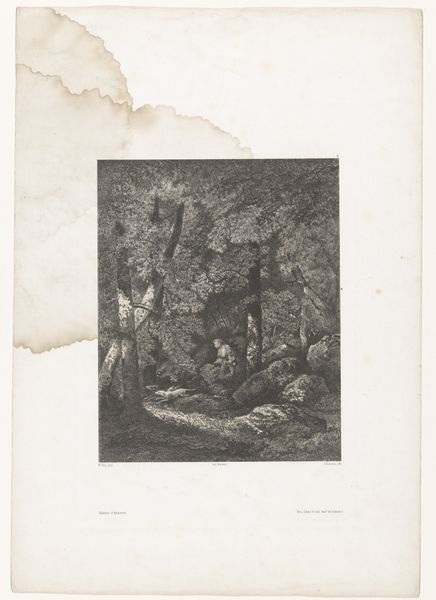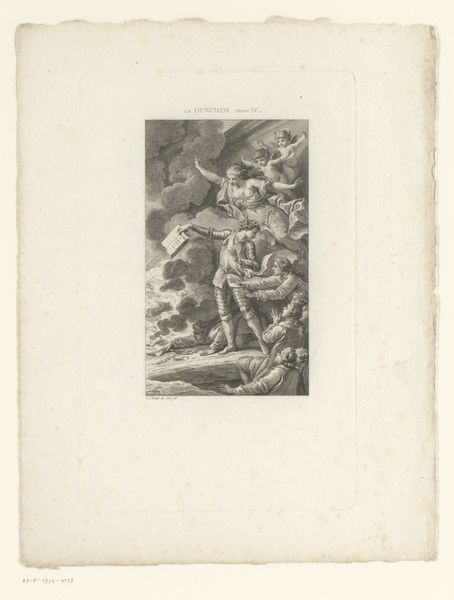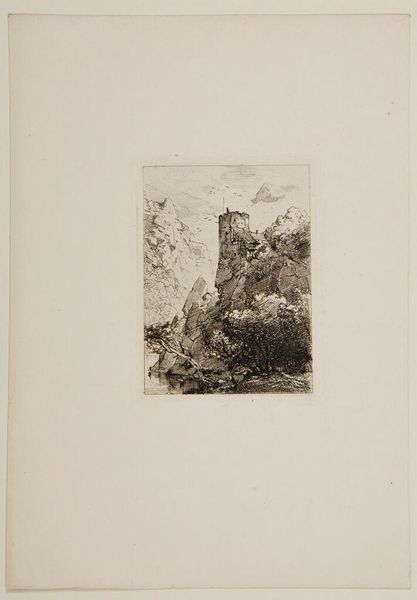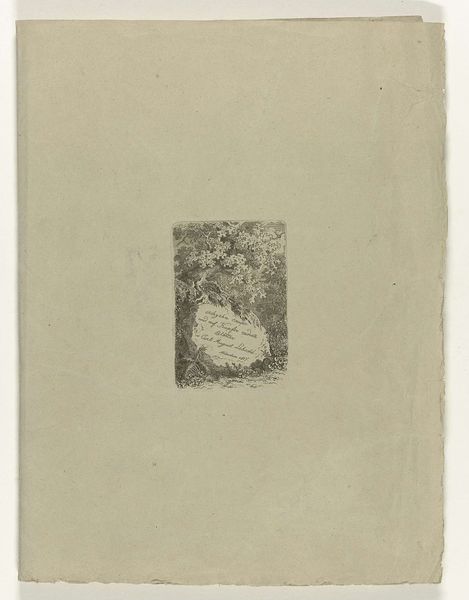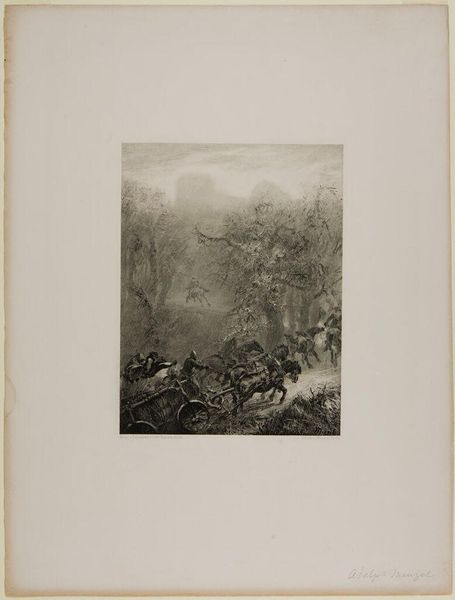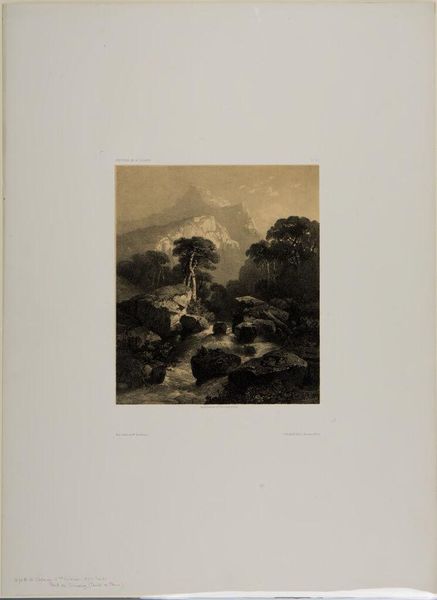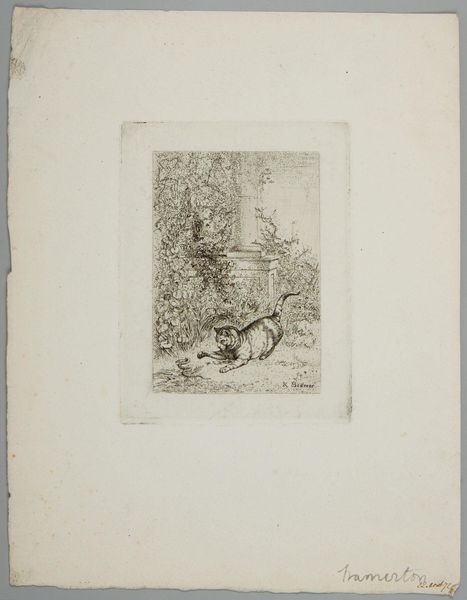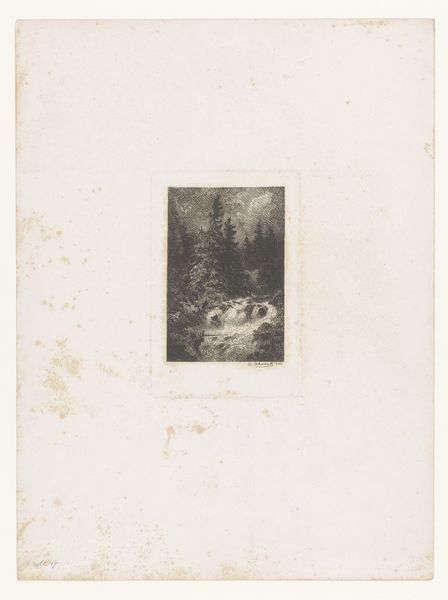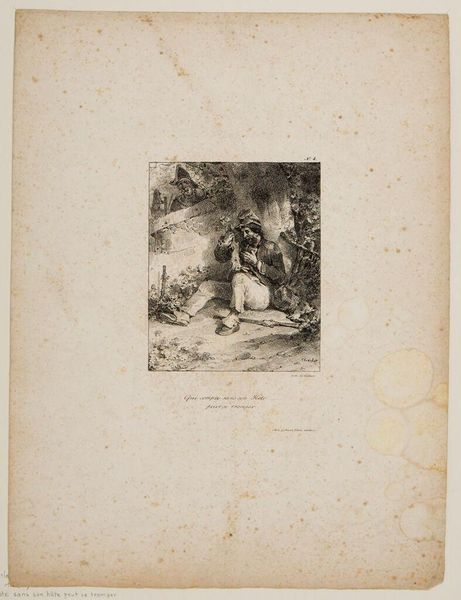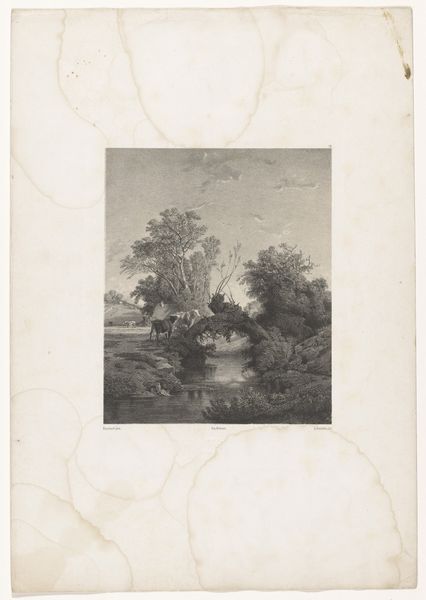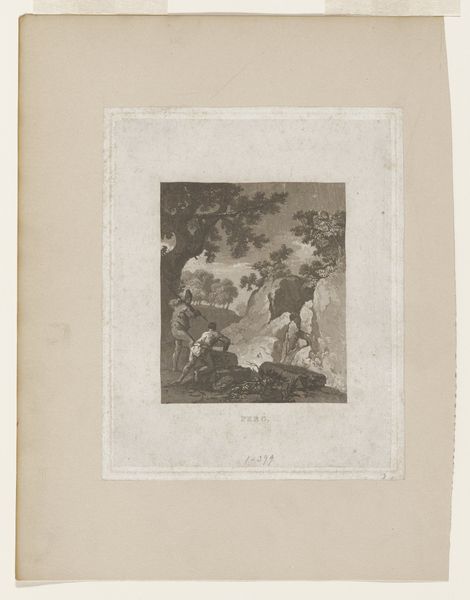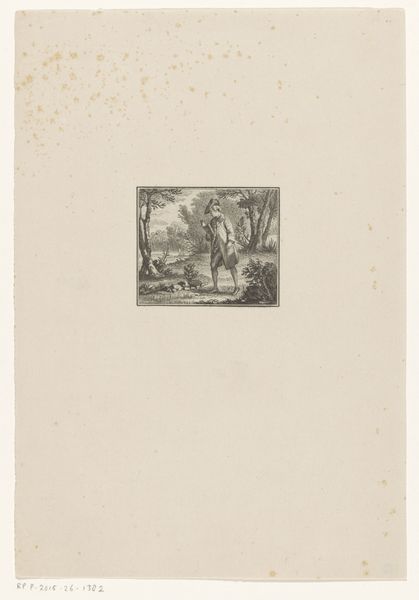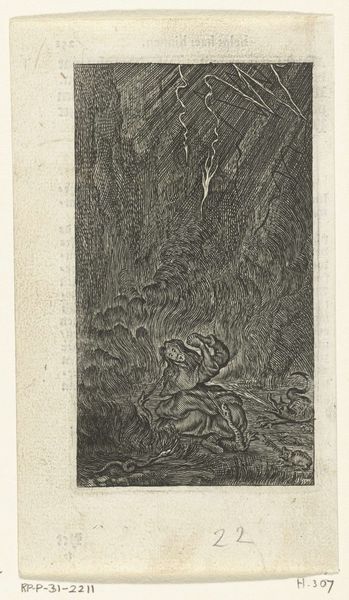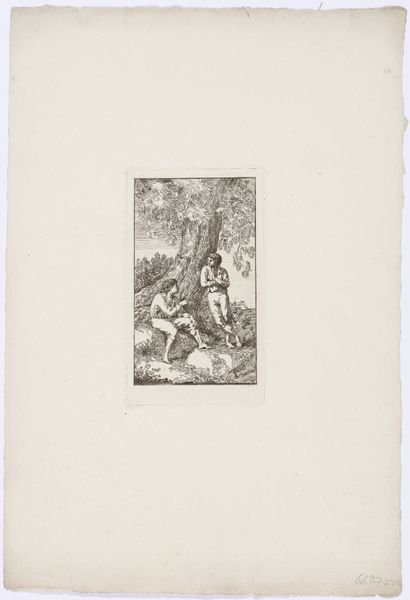
Dimensions: height 257 mm, width 218 mm
Copyright: Rijks Museum: Open Domain
Editor: This is "The Annunciation to the Shepherds," a gelatin silver print from 1854-1858 by Bisson Frères. The hazy quality almost makes it look like a dream. I’m struck by how the angel and the light seem to burst forth from the darkness. What do you see in this piece? Curator: This image is powerful in how it utilizes a new technology to visualize a deeply ingrained biblical scene, furthering a Romantic ideal of expressing the divine. The composition draws heavily from paintings, of course, but what happens when photography takes on a traditionally painted subject matter? Do we start to see the political and social functions of religion in a different light, literally? Think of the shepherds: they're being visited, disrupted, informed. What does that act of informing represent? Editor: That's interesting. It almost feels like this photograph attempts to legitimize a hierarchy by portraying this divine announcement to the shepherds. So, would the Romantics see this depiction as promoting some social or political ideal? Curator: Possibly, though the shepherds, typically the lowest rung of society, are also the first to witness the miracle. This speaks to both the Romantic embrace of nature and a questioning of established power structures. Where is the agency in this work, who holds it, and to what end? Consider also the limitations of early photography and how those restrictions could also influence the narratives of both social mobility and religious expression. Editor: So, the very act of using photography to depict this scene opens it up to new interpretations about power, faith, and societal structures. I didn't expect a religious scene to be so deeply connected to social and political dynamics. Curator: Exactly! The beauty of art history lies in these intersectional readings. It reveals how artworks function within larger dialogues, reflecting and shaping our understanding of the world. I find the questioning as interesting as any potential conclusion we could arrive at!
Comments
No comments
Be the first to comment and join the conversation on the ultimate creative platform.
